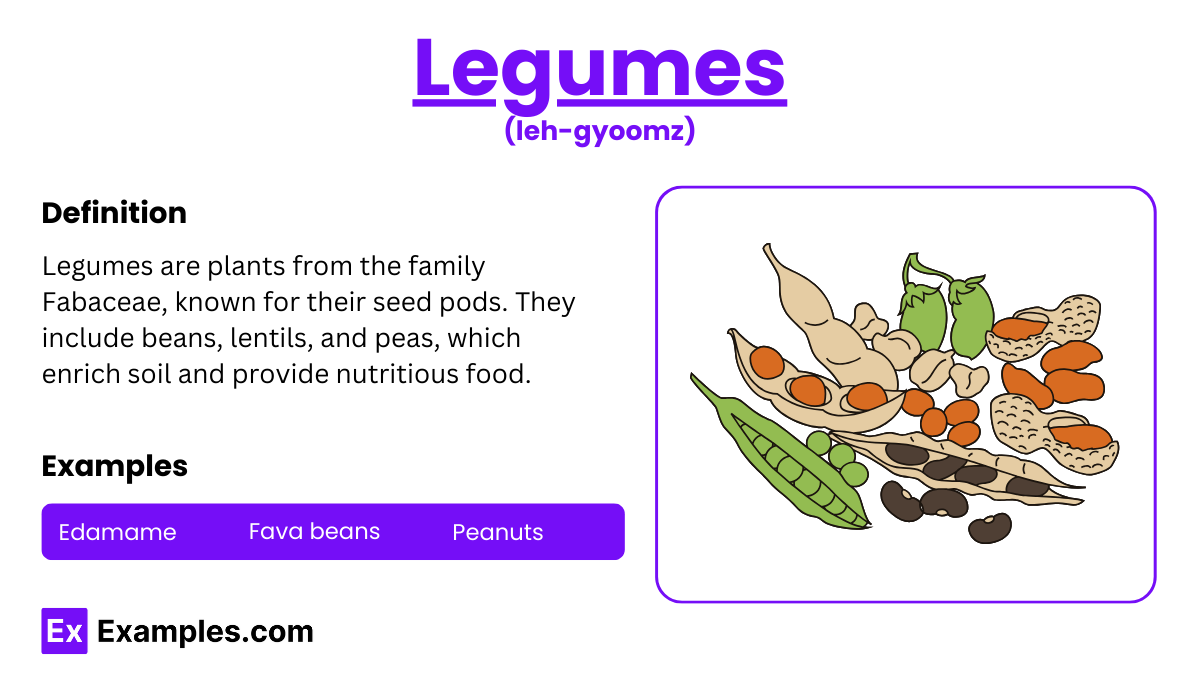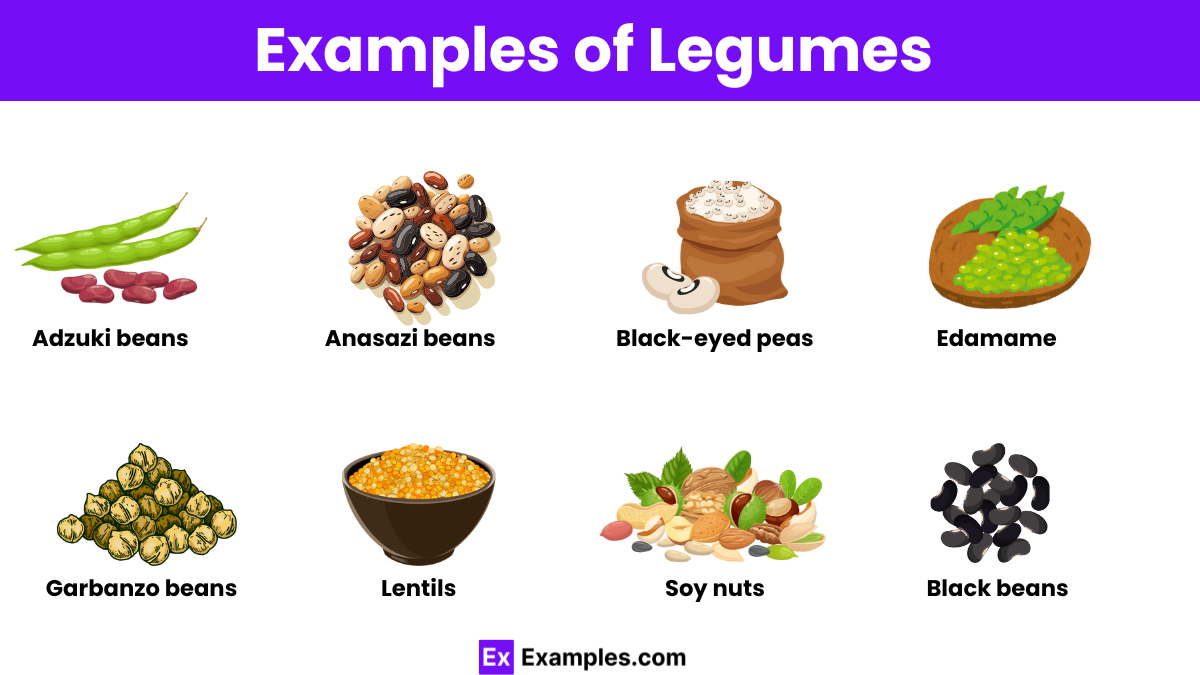Which of the following is a characteristic of legumes?
They have woody stems
They bear seeds in pods
They reproduce through spores
They do not require sunlight for growth


Legumes are a diverse group of plants that include beans, lentils, peas, and chickpeas. They are a rich source of carbohydrates, protein, fiber, and essential nutrients. Known for their ability to fix nitrogen in the soil, legumes play a crucial role in sustainable agriculture. They are also low in fat and can help regulate blood sugar levels, making them an excellent dietary choice for overall health and nutrition.
Legumes are a category of plants that produce seeds in pods, including beans, lentils, peas, and chickpeas. They are nutrient-dense, providing high levels of carbohydrates, protein, and fiber, and play a vital role in sustainable agriculture through nitrogen fixation.

| Aspect | Legumes | Lentils |
|---|---|---|
| Definition | A broad category of plants producing seeds in pods, including beans, peas, lentils, chickpeas, and more. | A type of legume known for their lens-shaped seeds and quick cooking time. |
| Varieties | Includes beans, peas, chickpeas, lentils, soybeans, and more. | Includes red, green, brown, yellow, and black lentils. |
| Nutritional Profile | High in protein, fiber, carbohydrates, vitamins, and minerals. | High in protein, fiber, iron, and folate; lower in fat. |
| Cooking Time | Varies widely; some require long soaking and cooking times. | Typically quick to cook, often requiring no soaking. |
| Common Uses | Used in soups, stews, salads, dips, and as meat substitutes. | Common in soups, stews, salads, and as a side dish. |
| Health Benefits | Supports heart health, weight management, and blood sugar regulation. | Similar benefits to legumes; especially known for being easy to digest. |
Yes, legumes are an excellent plant-based protein source.
Many legumes, like beans, benefit from soaking to reduce cooking time and improve digestibility.
Yes, legumes are high in fiber and protein, promoting satiety and aiding weight management.
Yes, legumes are a key protein source for vegetarian and vegan diets.
Legumes are rich in vitamins such as folate, vitamin B6, and vitamin C.
Yes, legumes are a good source of complex carbohydrates.
Some people may experience bloating and gas due to the high fiber content in legumes.
Yes, legumes are naturally gluten-free.
Soaking, sprouting, and cooking legumes properly can reduce antinutrients.
Canned legumes are convenient and nutritious, but choose low-sodium options when possible.
Text prompt
Add Tone
10 Examples of Public speaking
20 Examples of Gas lighting
Which of the following is a characteristic of legumes?
They have woody stems
They bear seeds in pods
They reproduce through spores
They do not require sunlight for growth
How do legumes benefit the soil?
By depleting soil nutrients
By fixing atmospheric nitrogen into the soil
By attracting insects that aerate the soil
By reducing the pH of the soil
Which of the following is an example of a legume?
Wheat
Rice
Soybean
Barley
What is the primary role of the root nodules in legumes?
To store water
To produce food
To fix nitrogen
To absorb sunlight
Which bacteria form a symbiotic relationship with legumes for nitrogen fixation?
E. coli
Rhizobium
Salmonella
Bacillus
What part of the legume plant is primarily consumed as food?
Roots
Stems
Seeds
Flowers
Why are legumes considered important in crop rotation?
They deplete the soil of nutrients
They increase soil erosion
They add nitrogen to the soil
They reduce soil temperature
Which of the following is NOT a legume?
Lentils
Chickpeas
Peas
Corn
What is the scientific term for the process by which legumes improve soil fertility?
Photosynthesis
Nitrogen fixation
Transpiration
Respiration
Which of the following legumes is commonly used as a green manure to enrich soil?
Alfalfa
Wheat
Oats
Sorghum
Before you leave, take our quick quiz to enhance your learning!

